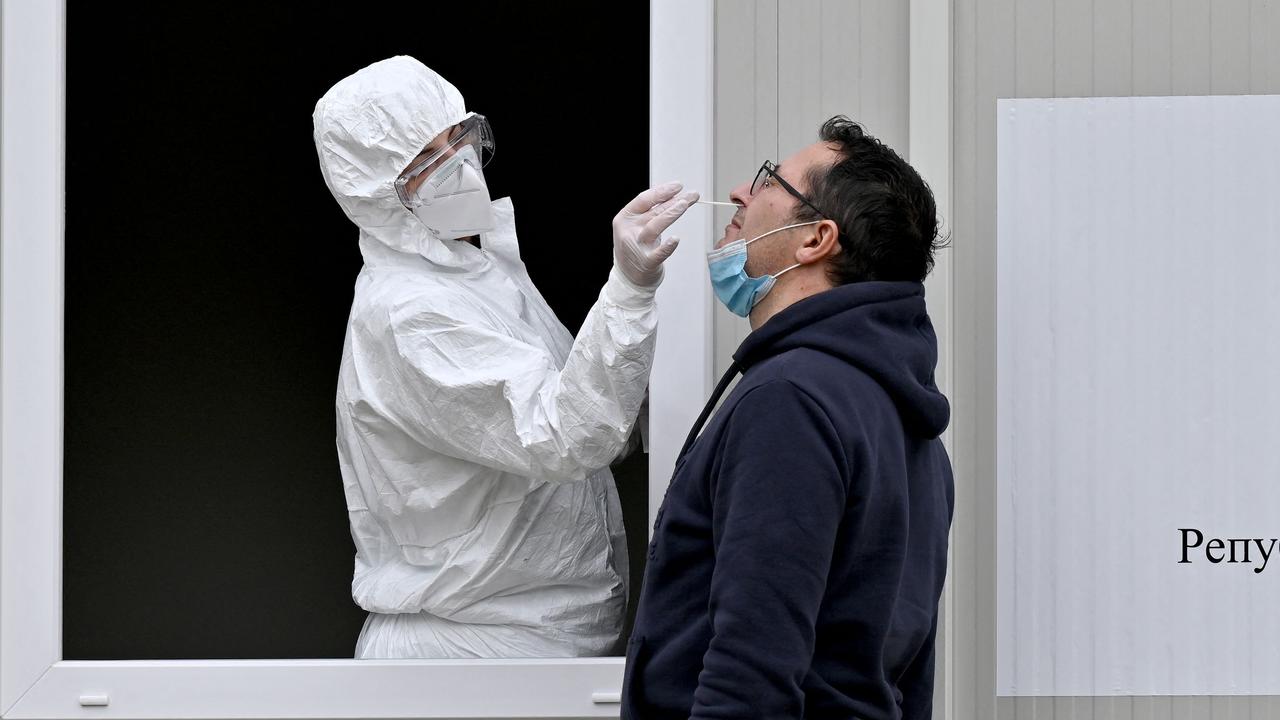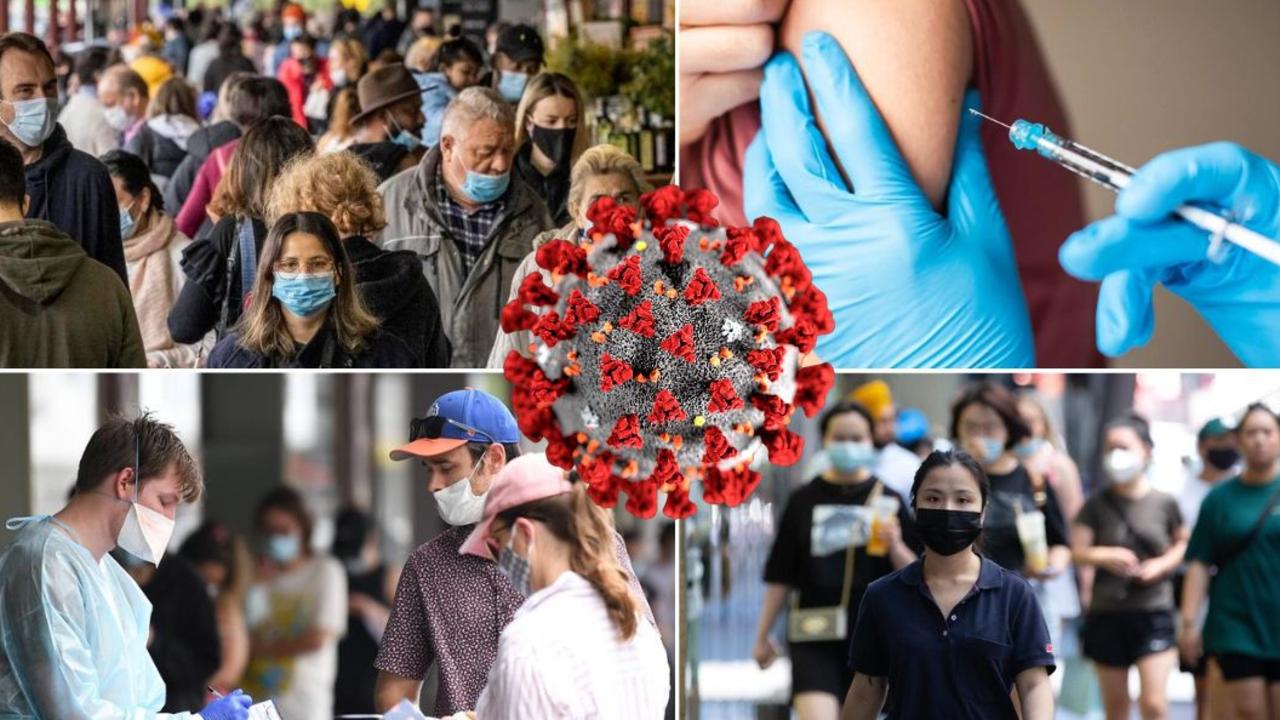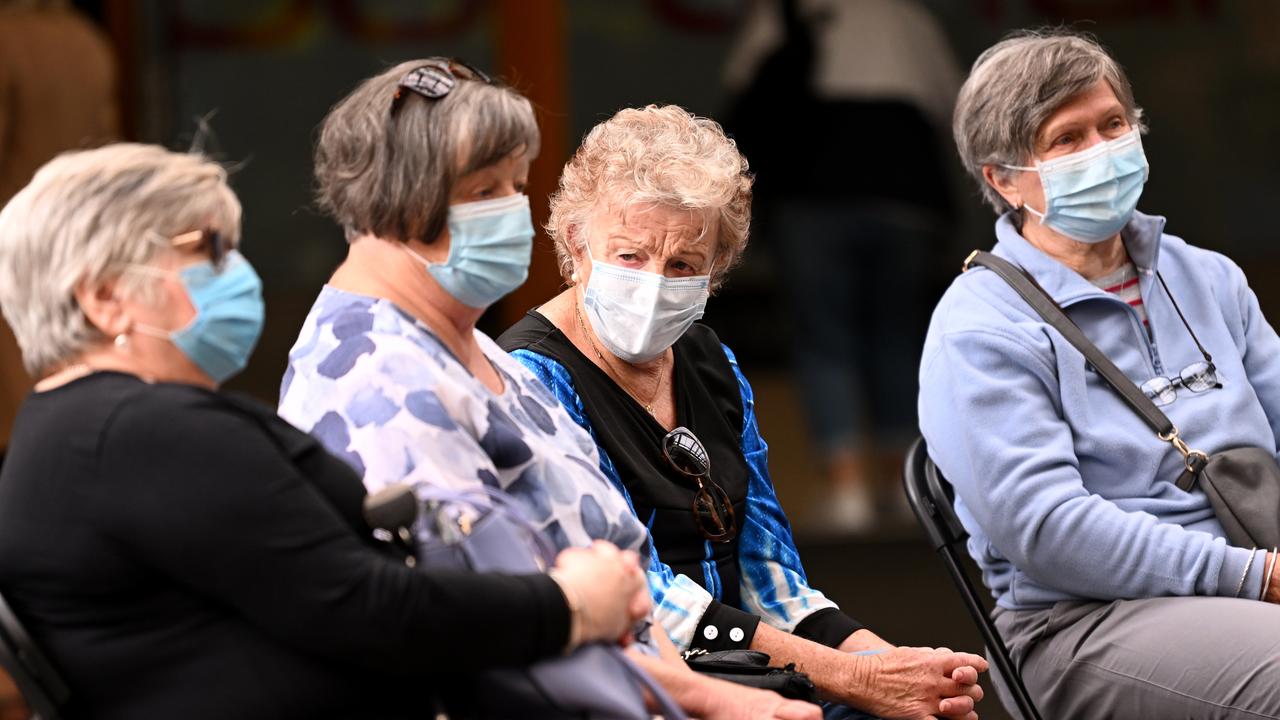Coronavirus world: North Korea confirms first Covid death as fever spreads ‘explosively’
North Korea is in a state of emergency as fever spreads ‘explosively’ through its 25 million population, which remains unvaccinated against Covid-19.
Coronavirus
Don't miss out on the headlines from Coronavirus. Followed categories will be added to My News.
North Korea confirmed its first Covid-19 death, saying fever was spreading “explosively” nationwide as tens of thousands of people were being isolated after falling sick.
With its 25 million people unvaccinated against Covid, North Korea’s crumbling health infrastructure would struggle to deal with a major outbreak, experts say.
The insular country only reported its first Covid cases a day earlier, saying it was moving into “maximum emergency epidemic prevention system” after sick patients in the capital Pyongyang tested positive for the Omicron variant.
North Korea has been under a rigid coronavirus blockade since the start of the pandemic in 2020, but with massive Omicron outbreaks in all neighbouring countries, experts said it was only a matter of time before Covid snuck in.
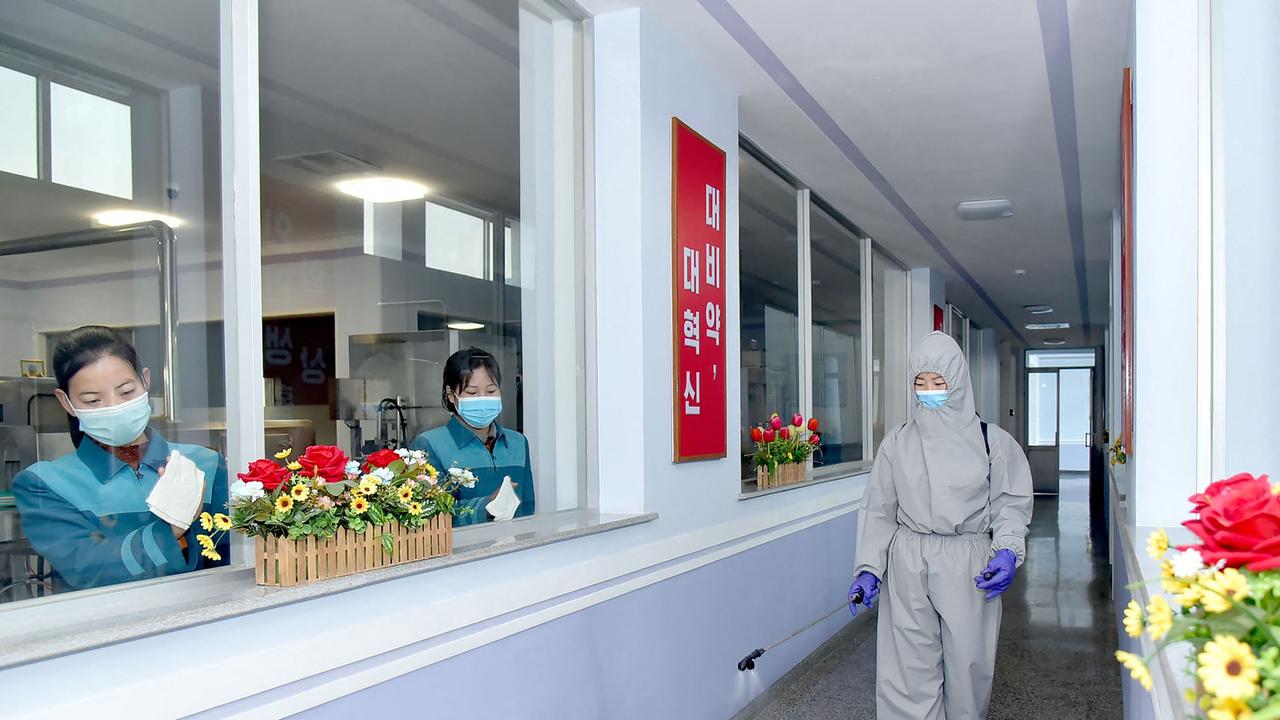
“A fever whose cause couldn’t be identified explosively spread nationwide from late April,” the official Korean Central News Agency said.
“Six persons died (one of them tested positive for the BA. 2 sub-variant of Omicron,)” it added.
“On May 12 alone, some 18,000 persons with fever occurred nationwide and as of now up to 187,800 people are being isolated and treated,” KCNA said.
Leader Kim Jong Un — seen wearing a mask on state TV for the first time — oversaw an emergency meeting of the Politburo and ordered nationwide lockdowns in a bid to halt the spread of the virus.
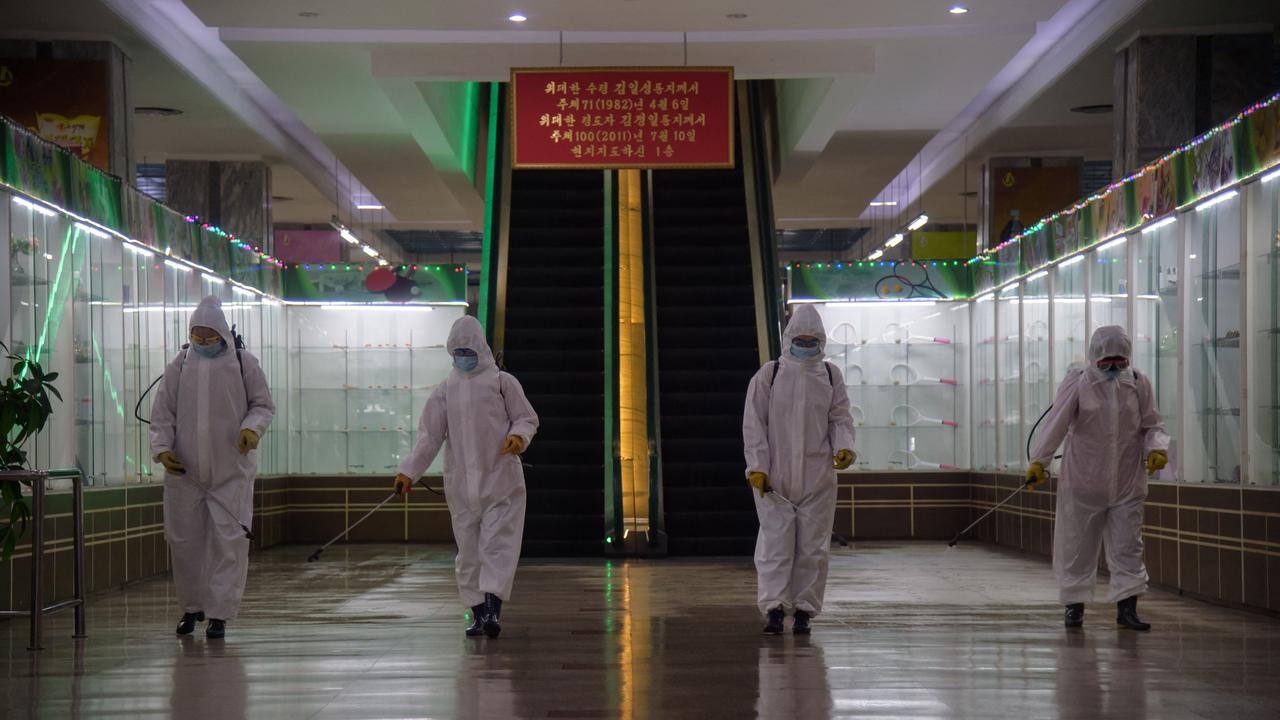
On Friday local time, KCNA said Kim visited the state emergency epidemic prevention headquarters and “learned about the nationwide spread of Covid-19”.
“It is the most important challenge and supreme tasks facing our Party to reverse the immediate public health crisis situation at an early date,” KCNA added.
It is likely that the massive nationwide outbreak is linked to a huge military parade held in Pyongyang on April 25, said Cheong Seong-chang of the Sejong Institute.
North Korea was likely to see “major chaos” due to the rapid spread of Omicron, he said, given that the country is currently reporting nearly 20,000 cases in a single day.
NORTH KOREA FIRES MISSILES IN RESPONSE TO COVID
North Korea confirmed its first-ever Covid-19 cases Thursday and declared a “serious emergency”, with leader Kim Jong Un appearing in a mask on television for the first time to order nationwide lockdowns.
Hours after the shock announcement — the first time the nuclear-armed country has admitted to having Covid cases — Seoul’s military said it had detected three short-range ballistic missiles fired from near Pyongyang.
The launch, one of more than a dozen sanctions-busting weapons tests so far this year, comes shortly after Washington warned that Kim’s regime could test a nuke any day, with satellite images indicating fresh activity at nuclear sites.
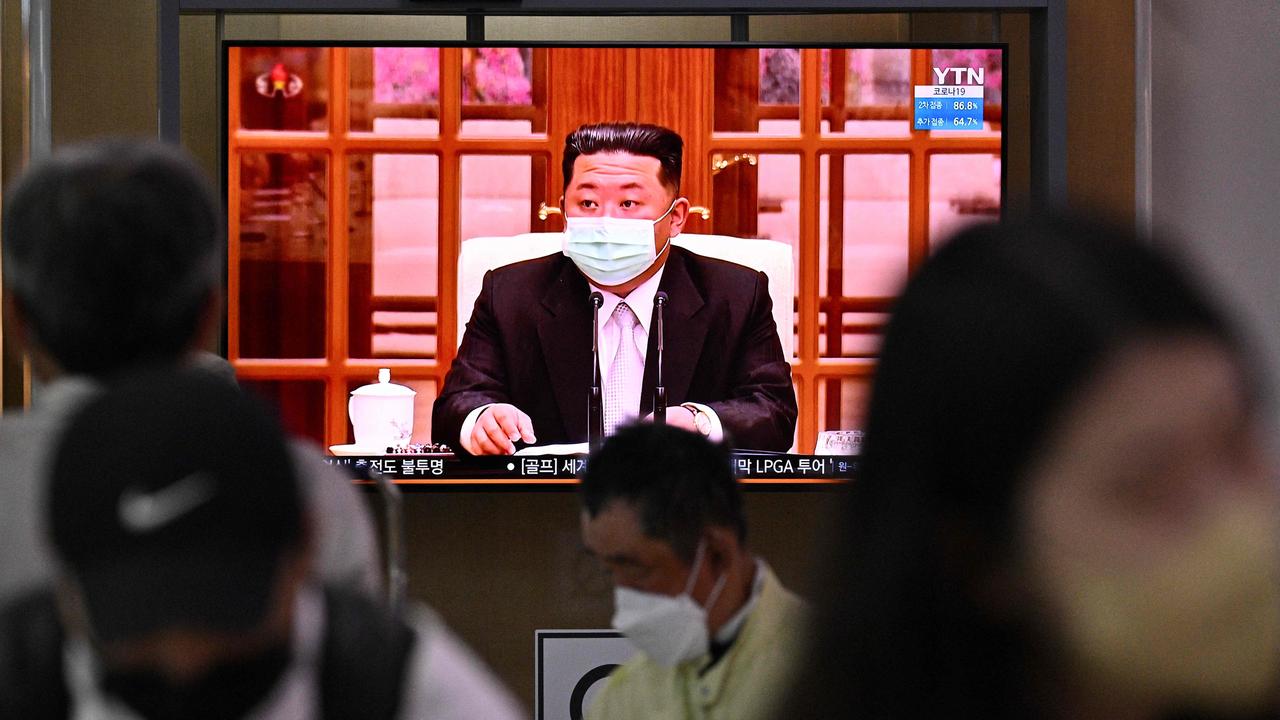

Earlier Thursday, North Korea said it had moved into a “maximum emergency epidemic prevention system” after patients with fevers in Pyongyang tested positive for the “Omicron BA. 2 variant” of Covid.
Kim, wearing a mask on state television for the first time, oversaw an emergency politburo meeting to discuss the outbreak and “called on all the cities and counties of the whole country to thoroughly lock down their areas”.
Kim told the meeting that the goal was to “quickly cure the infections in order to eradicate the source of the virus spread,” official news agency KCNA said, without specifying how many cases had been detected.
With its 25 million people not vaccinated against Covid, North Korea’s crumbling health infrastructure would struggle to deal with a major outbreak, experts say.

South Korea’s military said the short-range ballistic missiles Pyongyang tested Thursday flew 360 km (220 miles) at an altitude of 90 km.
New President Yoon Suk-yeol’s administration slammed North Korea’s “continuing provocations with a ballistic missile launch despite the outbreak of coronavirus,” his security office said after a meeting.
By following its reporting of Covid cases with a missile test, North Korea is signalling that “coronavirus control and its pursuit of national defence are two separate things,” Yang Moo-jin, a professor at the University of North Korean Studies said.
“It is now reasonable to assume it could also conduct a nuclear test with Kim Jong Un’s greenlight at any moment,” he added.
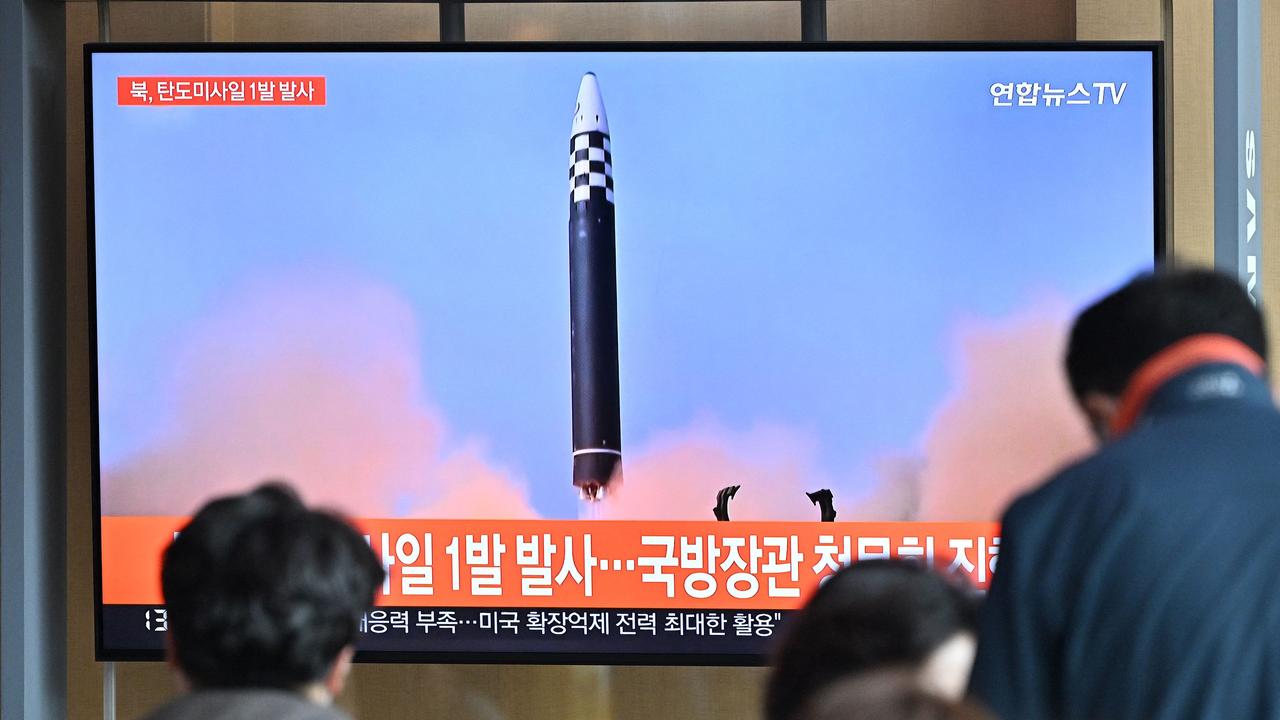
South Korea’s president, who was sworn in Tuesday, has vowed to get tough with Pyongyang after five years of failed diplomacy.
After high-profile talks collapsed in 2019, North Korea has doubled down on weapons testing, conducting a blitz of launches so far this year, including intercontinental ballistic missiles.
Satellite imagery indicates North Korea is preparing to conduct a nuclear test, and the United States has warned this could come as soon as this month.
The Covid outbreak could potentially disrupt their military program, analysts said — or accelerate it.
“There is a possibility of delaying the nuclear test in order to focus on overcoming the coronavirus,” Yang Moo-jin, a professor at the University of North Korean Studies, told AFP.
But he said if public fears over an outbreak were to spread, Kim might go ahead with a test “to divert this fear to another place”.
The Sejong Institute’s Cheong agreed that more weapons tests were likely for the regime to “boost the morale of North Korean citizens” in light of the Covid situation.
EUROPE ENDS MASK MANDATE ON FLIGHTS
The European Union will lift its mask requirement for flights and airports from next week, as the Covid pandemic eases in Europe.
Patrick Ky, the executive director of the European Union Aviation Safety Agency (EASA), described the development as “a big step forward in the normalisation of air travel” for “for passengers and aircrews.
“The European Union Aviation Safety Agency and European Centre for Disease Prevention and Control (ECDC) issued an update to the health safety measures for air travel, dropping the recommendation for mandatory wearing of medical masks in airports and on board a flight, while noting that a face mask is still one of the best protections against the transmission of COVID-19,” the Germany-based EASA said in a statement.

The revised recommendations will come into effect on Monday, but rules on mask wearing could still vary depending on the airlines, the statement said. According to the aviation agency, carriers should require masks to be worn on flights to and from destinations where they remain mandatory on public transport, such as Italy, and Germany. France announced it would lift the requirement starting on Monday.
Mr Ky also said that passengers coughing and sneezing “should strongly consider wearing a face mask, for the reassurance of those seated nearby” and that vulnerable passengers should continue to wear masks.
The relaxation of the guidelines come as EasyJet revealed its plans to remove seats from Airbus aircraft during the European this summer, allowing the British carrier to fly with fewer cabin crew as it struggles with Covid absences and staff recruitment.
Airlines have been struggling to maintain services during the pandemic’s global staffing crisis, with many cancelling flights during busy holiday periods to leave passengers stranded.
EasyJet’s move to reduce seats and the number of flight attendants require by law is seen as an industry first likely to be replicated by airlines with similar staffing shortages.
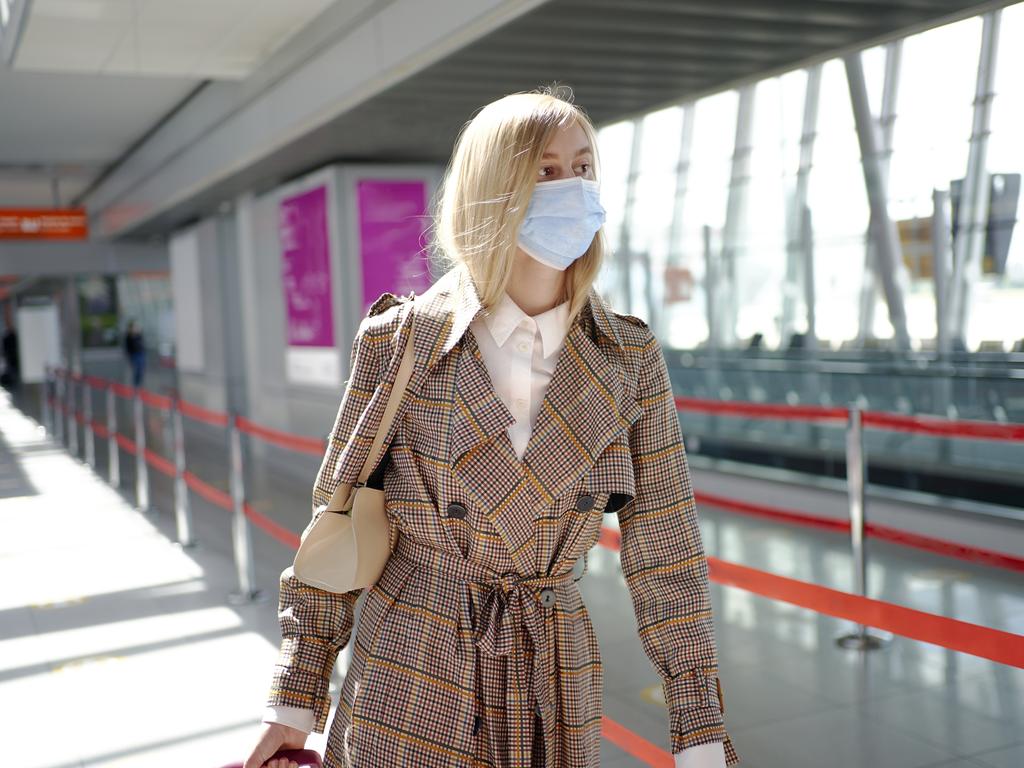
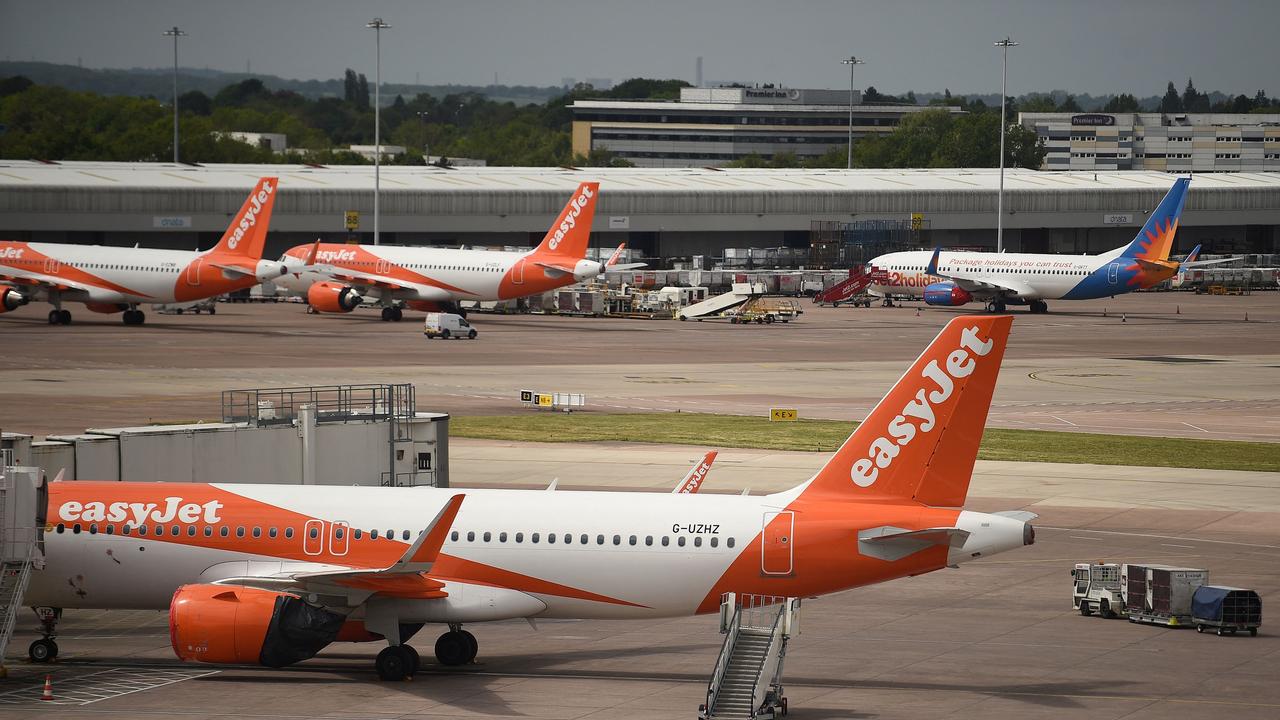
The carrier revealed that during the upcoming peak flying season, it will cut the number of passenger seats on its A319 jets to 150 from 156.
This will allow it to fly with three cabin crew instead of four, under regulations imposed by the Civil Aviation Authority watchdog in Britain.
EasyJet said in a statement that its seat reduction “is an effective way of … building additional resilience and flexibility into our operation this summer”.
While the global aviation sector was ravaged by the coronavirus outbreak that grounded planes and slashed thousands of jobs, demand is recovering strongly after travel curbs were lifted.
This is turn has caused a rush for new staff.
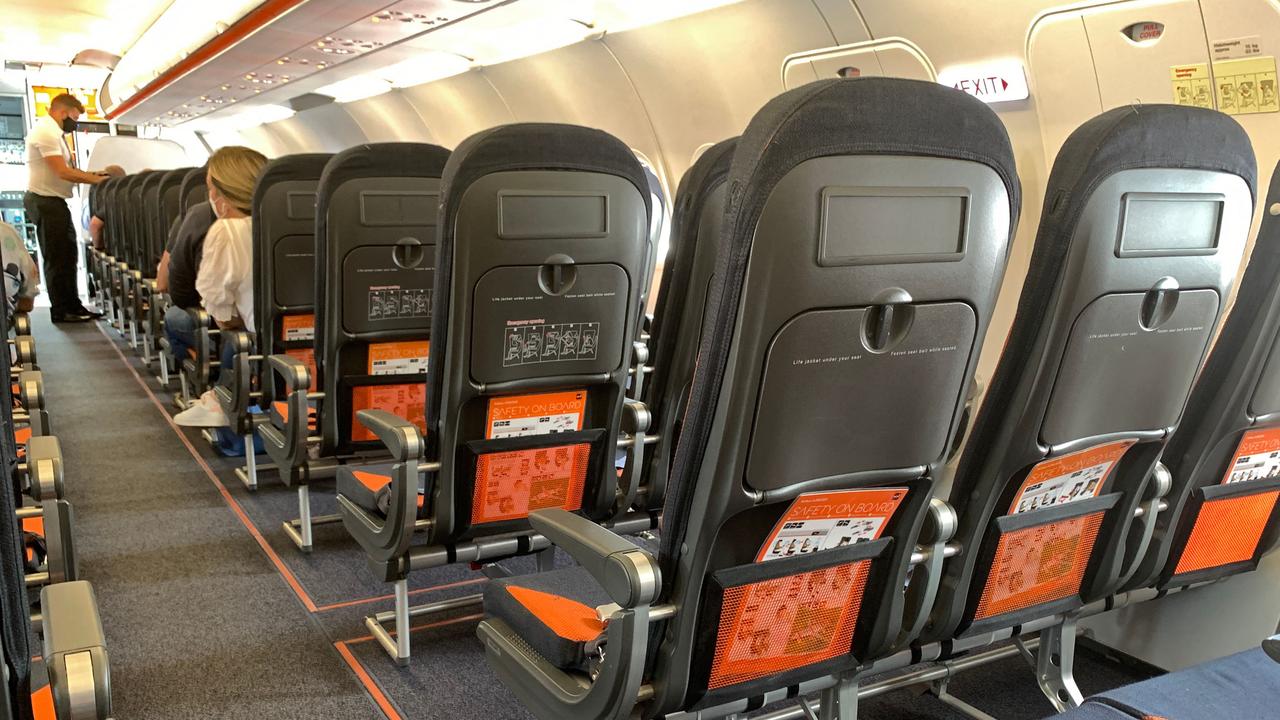
EasyJet said only its UK fleet of A319 planes would be affected by the removal of seats.
This numbers 60 jets, or slightly half of its A319 fleet.
The announcement comes after EasyJet cancelled a large number of flights over Easter as the sector faced a high level of absences owing to Covid.
Also last month, the no-frills carrier forecast its flight bookings to return to pre-Covid levels this summer, guiding it towards a lower-than-expected loss.
WHO CANS CHINA’S ZERO-COVID STRATEGY
China’s flagship zero-Covid strategy to defeat the pandemic is unsustainable and Beijing needs to change tact, according to the World Health Organisation.
China has imposed draconian measures, trapping most of Shanghai’s 25 million people at home for weeks as the country combats its worst outbreak since the pandemic began.
The Shanghai lockdown has caused outrage and rare protest in the last major economy still glued to a zero-Covid policy, while movement in the capital Beijing has been slowly restricted.
“When we talk about the zero-Covid strategy, we don’t think that it’s sustainable, considering the behaviour of the virus now and what we anticipate in the future,” WHO chief Tedros Adhanom Ghebreyesus told a press conference on Tuesday.
“We have discussed about this issue with Chinese experts and we indicated that the approach will not be sustainable.
“Transiting into another strategy will be very important.” There is a pressing political dynamic to China’s virus response, with President Xi Jinping pegging the legitimacy of his leadership on protecting Chinese lives from Covid.
Xi has doubled down on the zero-Covid approach, despite mounting public frustration.

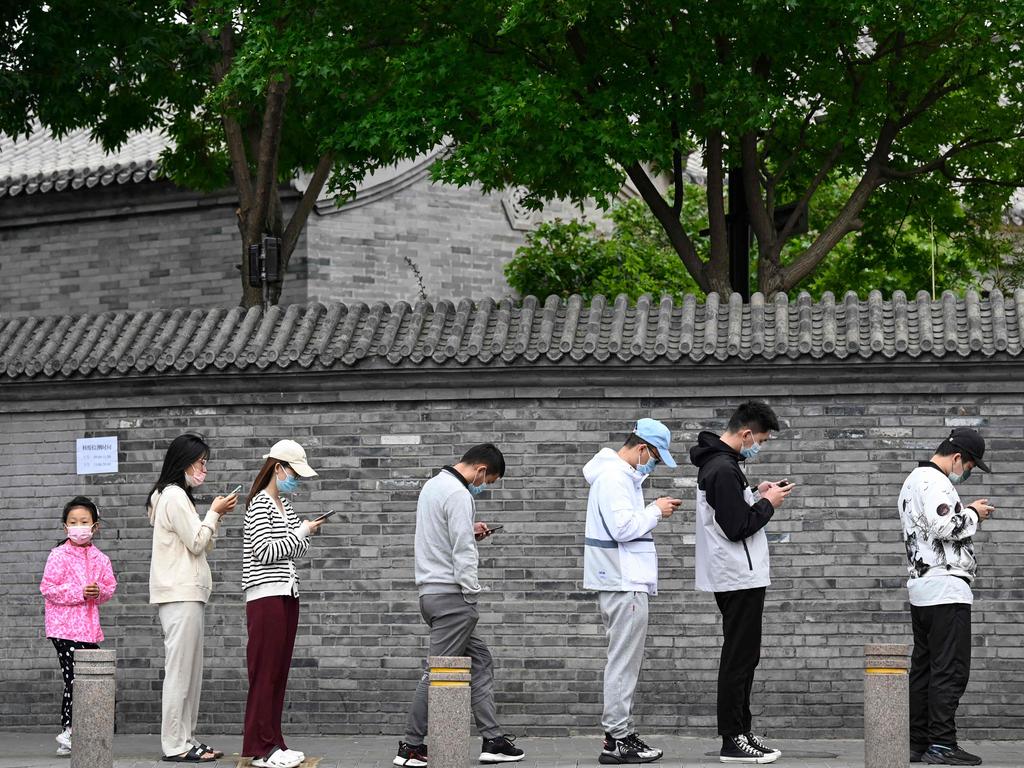
NZ PM PARTNER TESTS POSITIVE FOR COVID
New Zealand Prime Minister Jacinda Ardern has gone into home isolation after her partner Clarke Gayford tested positive for Covid-19.
Ms Ardern broke the news on Instagram on Sunday morning, local time, with a post of a card her daughter Neve had made for Mother’s Day.
Ms Ardern said Mr Gayford “woke up feeling a bit average and has tested positive … so we have 7 days of family time ahead of us!”
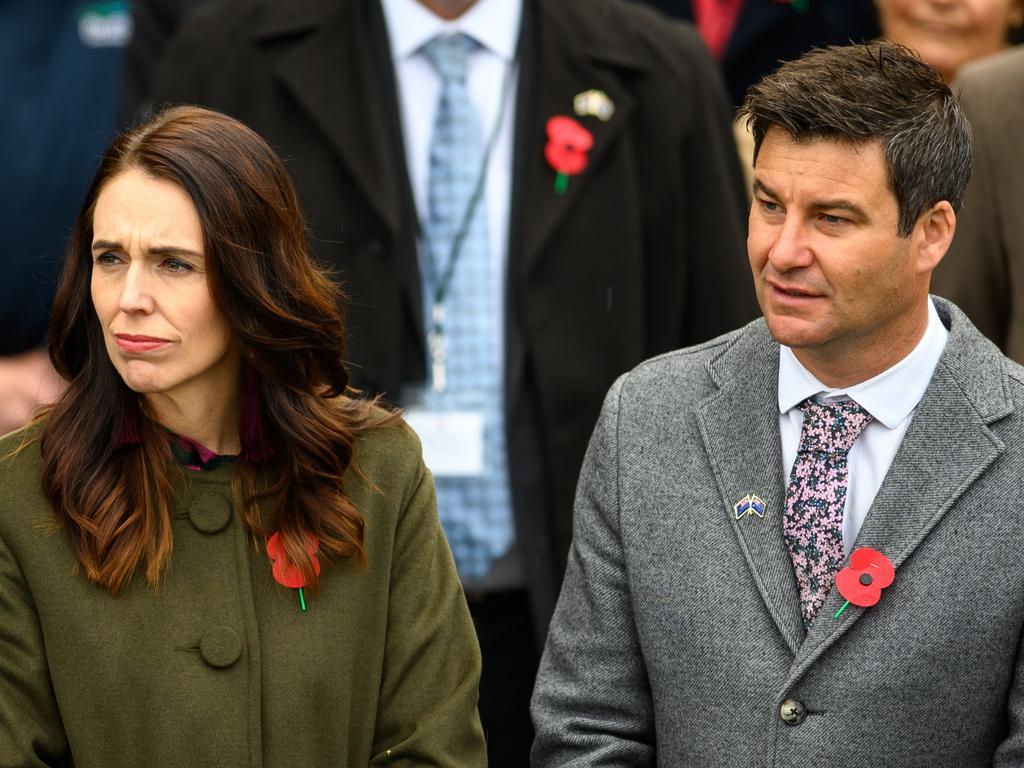
She revealed that she and her daughter Neve are “fine”.
“I’ll be working from home so anyone who watches question time, or is attending my Business NZ speech on Wednesday, you’ll still see me remotely.”
Neve’s card read “Yay! It is Mother’s Day. I love fishy kisses. I love you like hot lava!”
ANALYSIS: Jacinda Ardern has not yet tested positive. But if she does get Covid soon she could end up missing the Budget. https://t.co/2ISDbyvtu0
— Stuff.co.nz Politics (@NZStuffPolitics) May 8, 2022
XI’S ATTEMPT TO PULL CHINA OUT OF PANDEMIC SLUMP
China’s President Xi Jinping has offered state backing for tech, infrastructure and jobs to revive China’s economy, but analysts warn growth will continue to wilt until Beijing drops its rigid virus controls.
Two and a half years since coronavirus first emerged in Wuhan, China is the last major economy still closed off to the world, despite its relatively low death toll.
Lockdowns across dozens of cities – from the manufacturing hubs of Shenzhen and Shanghai to the breadbasket of Jilin – have wreaked havoc on supply chains over recent months, crushing small businesses and trapping consumers at home.
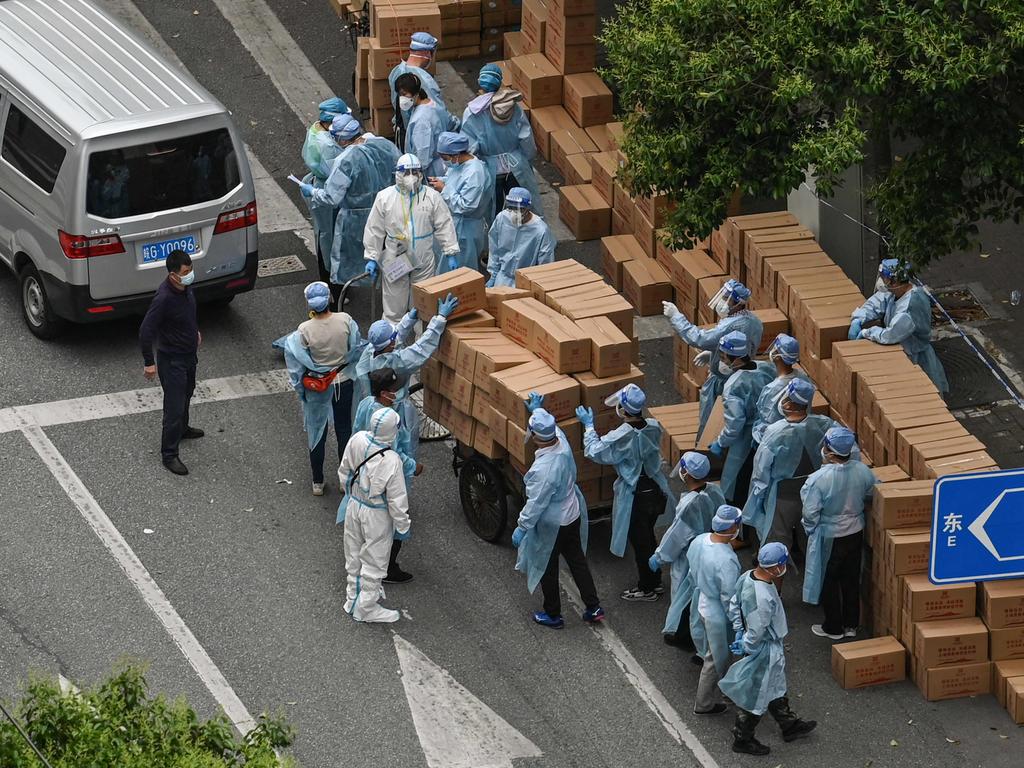
That has imperilled Beijing’s full-year growth target of about 5.5 per cent, with forecasters anticipating that around one percentage point may be shaved off that figure.
“We remain deeply concerned about growth,” Nomura analysts said this week. “We believe the Omicron variant and zero-Covid strategy represent the dominant challenges to growth stability.”
Yet China’s Communist leadership insisted on Thursday, local time, that the country will stick “unswervingly” to zero-Covid, with a meeting chaired by Xi declaring that “persistence is victory”.
To curtail the growing economic damage, Beijing has offered words of respite to the tech sector from rolling regulatory crackdowns and promised to pump prime the economy with an “all-out” infrastructure campaign.
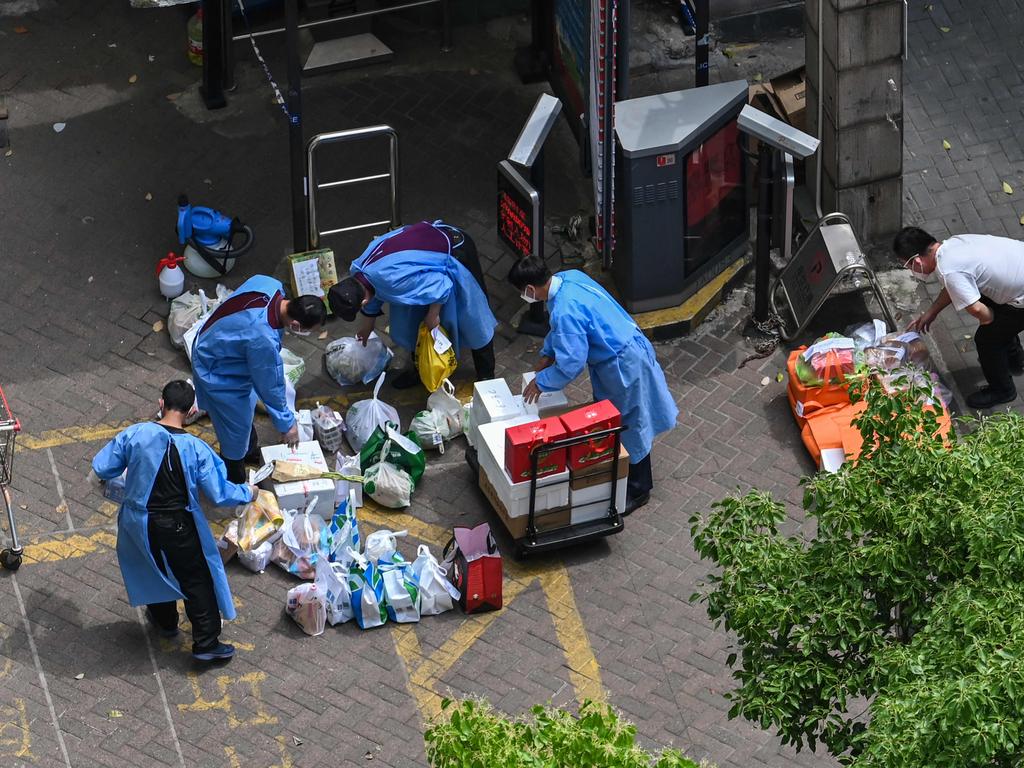
But observers say rallies may be temporary as long as the state’s reflex remains to hammer down the virus caseload at all costs.
“(The measures are) all very welcome … but how many more bridges and how many more sports stadiums are going to help us in creating an environment of predictable growth?” European Chamber president Joerg Wuttke told reporters on Thursday.
While many cities have bounced back after short, targeted lockdowns, other areas such as agricultural base Jilin province have been slow to recover from waves of restrictions.
“That precedent (Jilin) could mean a longer-lasting impact from Shanghai’s highly disruptive lockdown,” said Ernan Cui of Gavekal Dragonomics in a report Friday.
COVID HAS KILLED 17 MILLION, TRIPLE PREVIOUS ESTIMATES: WHO
The Covid-19 pandemic killed 13.3 to 16.6 million people in 2020 and 2021, the WHO estimated, up to triple the number of deaths officially attributed to the disease.
The World Health Organisation’s long-awaited estimate of the total number of deaths caused by the pandemic – including lives lost to its knock-on effects – finally puts a number on the broader impact of the crisis.
The figures give a more realistic picture of the worst pandemic in a century, which has killed around one in 500 people worldwide and continues to claim thousands of lives each week.
“The full death toll associated directly or indirectly with the Covid-19 pandemic between January 1, 2020 and December 31, 2021 was approximately 14.9 million (range 13.3 million to 16.6 million),” the UN health agency said.
The figures are extremely sensitive due to how they reflect on the handling of the crisis by authorities around the world, with some countries, notably India, already contesting the far higher numbers.
India’s reported Covid-19 deaths for 2020-21 are 481,000, but the WHO’s estimated total figure is 3.3 million to 6.5 million.
These sobering data not only point to the impact of the pandemic but also to the need for all countries to invest in more resilient health systems,” WHO chief Tedros Adhanom Ghebreyesus said.
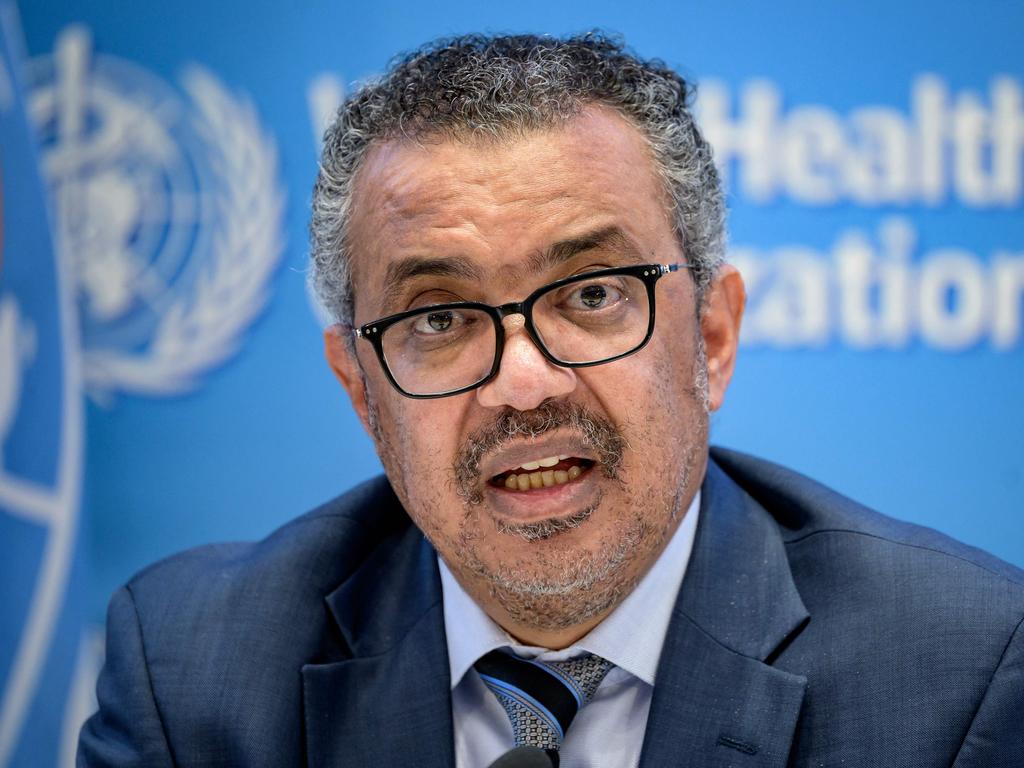
The WHO said that most of the excess deaths – 84 per cent – were concentrated in south and southeast Asia, Europe and the Americas.
Indeed, 10 countries alone accounted for 68 per cent of all excess deaths: Brazil, Egypt, India, Indonesia, Mexico, Peru, Russia, South Africa, Turkey and the United States.
High-income countries accounted for 15 per cent of the excess deaths; upper-middle-income nations 28 per cent; lower-middle-income states 53 per cent; and low-income countries four per cent.
The global death toll was higher for men than for women – 57 per cent male and 43 per cent female.
And 82 per cent of the excess deaths were estimated to be people aged over 60. “
The WHO believes that generally, six in 10 deaths worldwide are not formally recorded.
The WHO said the 14.9-million figure was produced by leading world experts who developed a methodology to generate estimates where data is lacking.
More Coverage
Originally published as Coronavirus world: North Korea confirms first Covid death as fever spreads ‘explosively’



